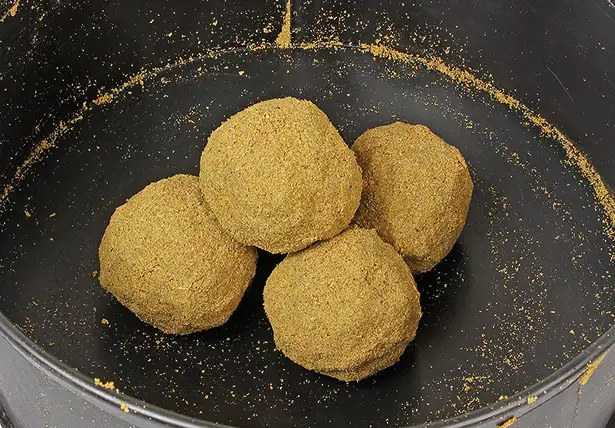This is a demo store. No orders will be fulfilled.
Beginners Guide – Groundbait Part One
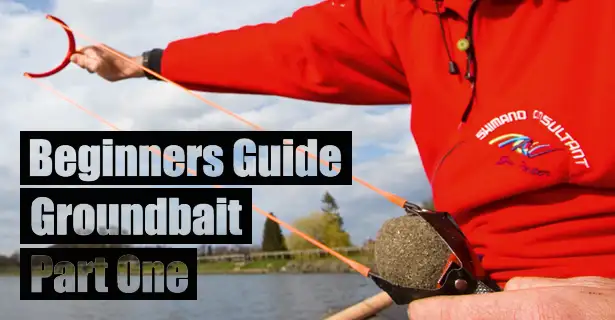

Groundbait 101 - The Basics To Feeding Like A Pro
The first thing to understand about groundbait is that there’s a varied menu on offer. Over the last decade we anglers have been spoiled by numerous manufacturers creating a multitude of types, flavours and colours, to give us a smorgasbord of options. Confused? Don’t worry, here’s the breakdown of what you’re looking at.
Fishmeal A great choice for carp, tench and bream, this stuff is produced, quite literally, from fish broken down into meal by drying the fish carcasses out and crushing them up. Fishmeal is the most common base ingredient in modern groundbaits and it is hugely effective. Fish love it and as it sits on the bottom – it’s relatively inert or inactive in the water – it leaches out plenty of scent to bring them into the feeding area.

Sweetcorn Produced from, you’ve guessed it, sweetcorn (albeit dried and ground down) a sweetcorn groundbait is massively pungent delivering loads of scent into the water to draw fish in. Not so well used in the UK, it’s a favourite on the Continent and is great for bream and tench, as you’d expect. It’s also a great option for mixing up into a paste for on the hook too.
Crumb This is old-school groundbait: cheap and solid, brilliant for bulking out a more expensive mix. It’s basically finely processed bread, so you can get it in brown or white varieties. It works as a feed on its own and you can also get it as punch crumb, which is less processed so is coarser and great to fish with breadpunch on the hook.
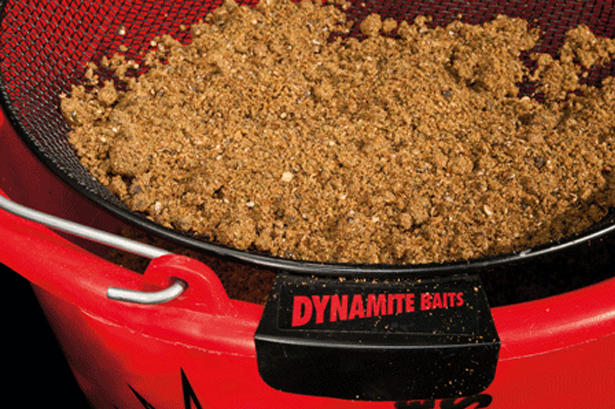
Active And Inert Groundbait can have ingredients in it to give it different properties in the water. An active groundbait is more ‘active’ under the water – small particles such as hemp will pop and fizz around, delivering more in the way of scent and sight attraction. It’s great for species such as roach that feed up in the water and will flit around after the particles. On the other hand, when you want to present a bed of feed on the bottom for fish that feed there, such as bream or tench, an inert groundbait can often be better as it will sit there and leach out scent along the bottom, not up in the water.
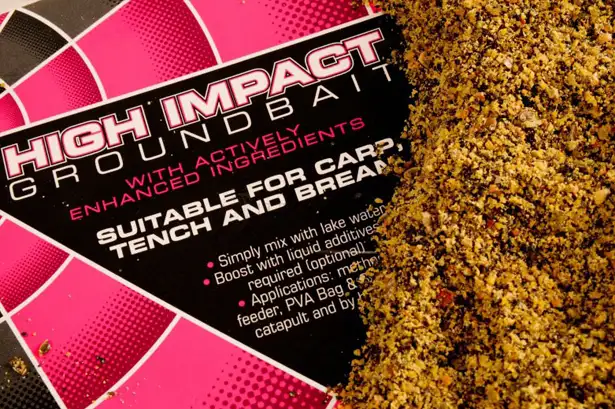
Method Designed specifically for the Method feeder these groundbaits are denser and claggier so that they cling to the frame of the feeder. This is important for standing up to the rigours of the cast and for when the carp start feeding off the feeder.
River Due to the flow and often the depth of rivers, groundbaits designed to be used on these waterways are heavier and denser. This allows them to get down to the bottom before breaking up and to stay there longer instead of getting washed away in the flow. They are also usually quite pungent, the idea being to deliver a trail of food and scent downstream to bring feeding fish upstream to your swim.
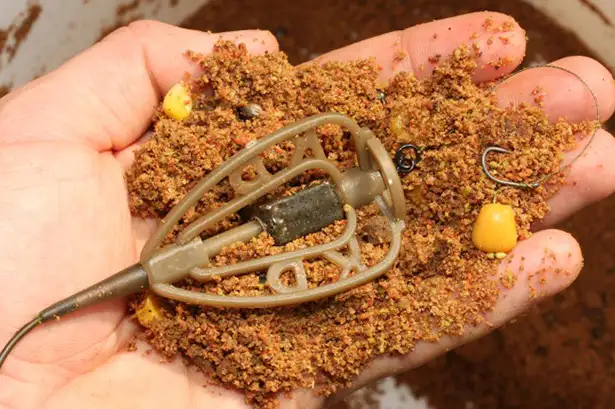
Molehill Soil A natural groundbait, molehill soil has been used by anglers for years. The reason for this is that it’s loaded with mole pooh, and with moles eating a lot of worms that means it’s also loaded with loads of attractive enzymes that fish love.
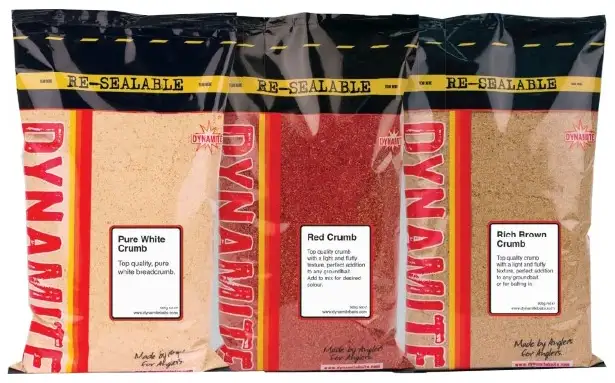
Colours Look at any tackle-shop shelf bearing the weight of a mass of groundbait bags and you’ll see that there’s more than just your traditional biscuit-brown colouring to choose from. Red, yellow, black, green… there’s a lot of choice, but what you buy will depend again on what you want to use it for – so make sure you think before you part with your cash. Here are the main colour groups:
Black This is your natural-venue choice, especially in the winter months when there’s less colour hanging in the water. It works because of the way a fish works.
To avoid being seen by predators, fish such as roach have dark backs to blend in with the bottom when looked at from above, and a white underside to blend in with the sky when viewed from below.
So, put down a light-coloured groundbait for them to feed over in coloured water and they’re going to stand out – the exact opposite to what they want and a patch of feed that will make them very nervous, which is not what you want.
Black, then, gives the perfect colour for fish to feed over, and the more they feed, the more you catch.

Brown The most common shade of groundbait, and for good reason. The majority of venues you will fish will a have a bottom that’s brown in colour – canal, lake, commercial or river. To make your swim seem as natural and appealing as possible then, a brown groundbait will blend in, delivering scent but not a colour patch that would raise suspicion.
Green Another natural colour that fish will be used to feeding over. Most green groundbaits will contain betaine, a derivative from sugar beet that when added to groundbait works to stimulate fish appetite. Because of this the majority of green-coloured groundbaits are aimed at anglers targeting carp, getting the species stimulated and feeding hard.
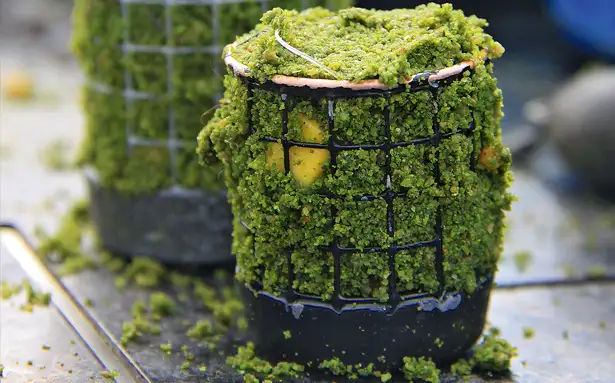
Red Red or orange are out-and-out visually stimulating groundbaits designed to not only deliver scent but be a beacon for fish to home in on.
It is not designed for natural venues but is perfect for commercials where fish are hungry, competitive and on the lookout for the next swim to feed on. Because of this it’s a particularly good bait for carp, tench and commercial barbel.
Shop Groundbait
